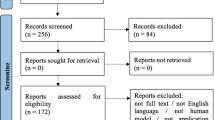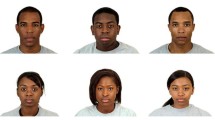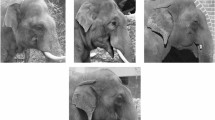Abstract
The numerical description of skeletal morphology enables forensic anthropologists to conduct objective, reproducible, and structured tests, with the added capability of verifying morphoscopic-based analyses. One technique that permits comprehensive quantification of outline shape is elliptical Fourier analysis. This curve fitting technique allows a form’s outline to be approximated via the sum of multiple sine and cosine waves, permitting the profile perimeter of an object to be described in a dense (continuous) manner at a user-defined level of precision. A large amount of shape information (the entire perimeter) can thereby be collected in contrast to other methods relying on sparsely located landmarks where information falling in between the landmarks fails to be acquired. First published in 1982, elliptical Fourier analysis employment in forensic anthropology from 2000 onwards reflects a slow uptake despite large computing power that makes its calculations easy to conduct. Without hurdles arising from calculation speed or quantity, the slow uptake may partly reside with the underlying mathematics that on first glance is extensive and potentially intimidating. In this paper, we aim to bridge this gap by pictorially illustrating how elliptical Fourier harmonics work in a simple step-by-step visual fashion to facilitate universal understanding and as geared towards increased use in forensic anthropology. We additionally provide a short review of the method’s utility for osteology, a summary of past uses in forensic anthropology, and software options for calculations that largely save the user the trouble of coding customized routines.









Similar content being viewed by others
References
Kuhl F, Giardina C (1982) Elliptic Fourier features of a closed contour. Comput Graphics Image Process 18:236–258. doi:10.1016/0146-664X(82)90034-X
Herivel J (1975) Joseph Fourier: the man and the physicist. Oxford University Press, Oxford
Cosgriff RL (1966) Identification of shape. Report No. 820–11 of the Ohio State University Research Foundation. ASTIA Identification AD 254 792
Tanaka H, Lestrel P, Uetake T, Susumu K, Ohtsuki F (2000) Sex differences in proximal humeral outline shape: elliptical Fourier functions. J Forensic Sci 45(2):292–302. doi:10.1520/JFS14682J
Crampton J (1995) Elliptic Fourier shape analysis of fossil bivalves: some practical considerations. Lethaia 28(2):179–186. doi:10.1111/j.1502-3931.1995.tb01611.x
Lestrel P (1989) Method for analyzing complex two-dimensional forms: elliptical Fourier functions. Am J Human Biol 1:149–164. doi:10.1002/ajhb.1310010204
Lestrel P (1997) Fourier descriptors and their applications in biology. Cambridge University Press, Cambridge; New York
Lestrel P (1997) Morphometrics of craniofacial form. In: Dixon D, Hoyte DAN, Ronning O (eds) Fundamentals of craniofacial growth. CRC Press, Boca Raton, FL, pp 155–187
Nixon M, Aguado A (2008) Feature extraction and image processing, 2nd edn. Elsevier Academic Press, Oxford
Swiderski DL, Zelditch ML, Fink WL (2002) Comparability, morphometrics and phylogenetic systematics. In: MacLeod N, Forey PL (eds) Morphology, shape and phylogeny. Systematics Association Special Volumes. CRC Press, Boca Raton, FL, pp 67–99
Transnational College of Lex (2012) Who is Fourier? A mathematical adventure (trans: Gleason a), 2nd edn. Language Research Foundation, Cambridge, MA
Christensen AM (2005) Testing the reliability of frontal sinuses in positive identification. J Forensic Sci 50(1):18–22. doi:10.1520/JFS2004145
Kullman L, Eklund B, Grundin R (1990) The value of the frontal sinus in identification of unknown persons. J Forensic Odontostomatol 8(1):3–10
Cryer M (1907) Some variations in the frontal sinuses. JAMA 48(4):284–289. doi:10.1001/jama.1907.25220300012001d
McDowell J, L’Abbé E, Kenyhercz M (2012) Nasal aperture shape evaluation between black and white South Africans. Forensic Sci Int 222(1–3):397 . doi:10.1016/j.forsciint.2012.06.007e391-396
Hefner J (2014) Cranial morphoscopic traits and the assessment of American black, American white, and Hispanic ancestry. In: Berg GE, Ta’ala SC (eds) Biological affinity in forensic identification of human skeletal remains: beyond black and white. Taylor & Francis Group, Boca Raton, FL, pp 27–42
Schmittbuhl M, Le Minor J, Schaaf A, Mangin P (2002) The human mandible in lateral view: elliptical Fourier descriptors of the outline and their morphological analysis. Ann Anat 184(2):199–207. doi:10.1016/S0940-9602(02)80021-8
Spradley K, Jantz R (2011) Sex estimation in forensic anthropology: skull versus postcranial elements. J Forensic Sci 56(2):289–296. doi:10.1111/j.1556-4029.2010.01635.x
Steyn M, İşcan MY (1998) Sexual dimorphism in the crania and mandibles of south African whites. Forensic Sci Int 98(1–2):9–16. doi:10.1016/S0379-0738(98)00120-0
Giles E (1964) Sex determination by discriminant function analysis of the mandible. Am J Phys Anthropol 22(2):129–135. doi:10.1002/ajpa.1330220212
Williams B, Rogers T (2006) Evaluating the accuracy and precision of cranial morphological traits for sex determination. J Forensic Sci 51(4):729–735. doi:10.1111/j.1556-4029.2006.00177.x
Stephan C, Emanovsky P, Tyrrell A (2009) The use of clavicle boundary outlines to identify skeletal remains of US personnel recovered from past conflicts: results of initial tests. Paper presented at the Biological Shape Analysis: proceedings of the 1st international symposium, Tsukuba, Japan, 3–6 June 2009
Stephan C, Winburn A, Christensen A, Tyrrell A (2011) Skeletal identification by radiographic comparison: blind tests of a morphoscopic method using antemortem chest radiographs. J Forensic Sci 56(2):320–332. doi:10.1111/j.1556-4029.2010.01673.x
Dittrick J, Suchey J (1986) Sex determination of prehistoric central California skeletal remains using discriminant analysis of the femur and humerus. Am J Phys Anthropol 70:3–9. doi:10.1002/ajpa.1330700103
Velemínská J, Krajíček V, Dupej J, Goméz-Valdés J (2013) Technical note: geometric morphometrics and sexual dimorphism of the greater sciatic notch in adults from two skeletal collections: the accuracy and reliability of sex classification. Am J Phys Anthropol 152(4):558–565. doi:10.1002/ajpa.22373
Steyn M, İşcan MY (2008) Metric sex determination from the pelvis in modern Greeks. Forensic Sci Int 179(1):86.e81–86.e86. doi:10.1016/j.forsciint.2008.04.022
Patriquin ML, Steyn M, Loth SR (2005) Metric analysis of sex differences in south African black and white pelves. Forensic Sci Int 147(2–3):119–127. doi:10.1016/j.forsciint.2004.09.074
Walker P (2005) Greater sciatic notch morphology: sex, age, and population differences. Am J Phys Anthropol 127(4):385–391. doi:10.1002/ajpa.10422
Rogers T, Saunders S (1994) Accuracy of sex determination using morphological traits of the human pelvis. J Forensic Sci 39(4):1047–1056. doi:10.1016/1353-1131(95)90091-8
Patriquin ML, Loth SR, Steyn M (2003) Sexually dimorphic pelvic morphology in south African whites and blacks. Homo 53(3):255–262. doi:10.1078/0018-442X-00049
Niespodziewanski E, Stephan CN, Guyomarc’h P, Fenton TW (2016) Human identification via lateral patella radiographs: a validation study. J Forensic Sci 61(1):134–140. doi:10.1111/1556-4029.12898
Trotter M, Gleser G (1952) Estimation of stature from long bones of American whites and negroes. Am J Phys Anthropol 10(4):463–514. doi:10.1002/ajpa.1330100407
National Research Council (2009) Strengthening forensic science in the United States: a path forward. National Academies Press, Washington, D.C
Lestrel P, Cesar R Jr, Takahashi O, Kanazawa E (2004) A Fourier-wavelet representation of 2-D shapes: sexual dimorphism in the Japanese cranial base. Anthropol Sci 112(1):3–28. doi:10.1537/ase.00069
Martin R (1928) Lehrbuch der anthropologie in systematischer darstellung: mit besonderer berücksichtigung der anthropologischen methoden für studierende ärtze und forschungsreisende. Gustav Fischer, Jena
Jantz R, Ousley S (2005) FORDISC 3.1: personal computer forensic discriminant functions. The University of Tennessee, Knoxville
Gower J (1975) Generalized Procrustes analysis. Psychometrika 40(1):33–51. doi:10.1007/BF02291478
Rohlf F, Slice D (1990) Extensions of the Procrustes method for the optimal superimposition of landmarks. Systematic Zool 39(1):40–59. doi:10.2307/2992207
Bookstein FL (1991) Morphometric tools for landmark data: geometry and biology. Cambridge University Press, Cambridge
Lele S (1991) Some comments on coordinate-free and scale-invariant methods in morphometrics. Am J Phys Anthropol 85(4):407–417. doi:10.1002/ajpa.1330850405
Bookstein F (1997) Landmark methods for forms without landmarks: morphometrics of group differences in outline shape. Med Image Anal 1(3):225–243. doi:10.1016/S1361-8415(97)85012-8
Daubechies I (1992) Ten lectures on wavelets, vol 61. Society for Industrial and Applied Mathematics, Philadelphia, PA
Rohlf F (1986) Relationships among eigenshape analysis, Fourier analysis, and analysis of coordinates. Math Geol 18(8):845–854. doi:10.1007/BF00899747
R Core Team (2013) R: a language and environment for statistical computing. R Foundation for Statistical Computing. http://www.R-project.org.
Rohlf F, Archie J (1984) A comparison of Fourier methods for the description of wing shape in mosquitoes (Diptera: Culicidae). Systematic Zool 33(3):302–317. doi:10.2307/2413076
Zahn C, Roskies R (1972) Fourier descriptors for plane closed curves. IEEE Trans Comput C-21(3):269–281
Zhang DS, Lu G (2002) A comparative study of Fourier descriptors for shape representation and retrieval. In: Proceedings of the Fifth Asian Conference on Computer Vision (ACCV02), Melbourne, Australia, January 22–25. pp 646–651
Gore T, Nawrocki S, Langdon J, Bouzar N The use of elliptical Fourier analysis on orbit shape in human skeletal remains. Paper presented at the Biological Shape Analysis: proceedings of the 1st international symposium, Tsukuba, Japan, 3–6 June, 2009
Claude J (2008) Morphometrics with R. Springer-Verlag, New York, NY
Neal F, Russ J (2012) Measuring shape. CRC Press, Boca Raton, FL
Lestrel P, Cesar R, Takahashi O, Kanazawa E (2005) Sexual dimorphism in the Japanese cranial base: a Fourier-wavelet representation. Am J Phys Anthropol 128(3):608–622. doi:10.1002/ajpa.20209
Howells WW (1973) Cranial variation in man: a study by multivariate analysis of patterns of difference among recent human populations. Harvard University Press, Cambridge
Ferrario V, Sforza C, Schmitz J, Miani A, Taroni G (1995) Fourier analysis of human soft tissue facial shape: sex differences in normal adults. J Anat 187(3):593–602
Lestrel P, Kanazawa E, Wolfe C (2011) Sexual dimorphism using elliptical Fourier analysis: shape differences in the craniofacial complex. Anthropol Sci 119(3):213–229. doi:10.1537/ase.100630
Stewart T (1979) Essentials of forensic anthropology, especially as developed in the United States. Charles C, Thomas, Springfield, IL
Frieß M, Baylac M (2003) Exploring artificial cranial deformation using elliptical Fourier analysis of Procrustes aligned outlines. Am J Phys Anthropol 122(1):11–22
Corny J, Detroit F (2014) Technical note: anatomic identification of isolated modern human molars: testing Procrustes aligned outlines as a standardization procedure for elliptic Fourier analysis. Am J Phys Anthropol 153(2):314–322. doi:10.1002/ajpa.22428
MacLeod N (2012) The center cannot hold II: elliptical Fourier analysis. PalaeoMath 101(79):29–42
Lestrel P, Kerr W (1993) Quantification of function regulator therapy using elliptical Fourier functions. Eur J Orthod 15(6):481–491. doi:10.1093/ejo/15.6.481
Chen S, Lestrel P, Kerr W, McColl J (2000) Describing shape changes in the human mandible using elliptical Fourier functions. Eur J Orthod 22:205–216. doi:10.1093/ejo/22.3.205
Sheridan C, Thomas C, Clement J (1997) Quantification of ethnic differences in facial profile. Aust Orthod J 14(4):218–224
Thayer ZM, Dobson SD (2010) Sexual dimorphism in chin shape: implications for adaptive hypotheses. Am J Phys Anthropol 143(3):417–425. doi:10.1002/ajpa.21330
Rose A, Woods M, Clement J, Thomas C (2003) Lateral facial soft-tissue prediction model: analysis using Fourier shape descriptors and traditional cephalometric methods. Am J Phys Anthropol 121(2):172–180. doi:10.1002/ajpa.10173
Christensen A (2004) Assessing the variation in individual frontal sinus outlines. Am J Phys Anthropol 127(3):291–295. doi:10.1002/ajpa.20116
Maxwell A, Ross A (2014) A radiographic study on the utility of cranial vault outlines for positive identifications. J Forensic Sci 59(2):314–318. doi:10.1111/1556-4029.12346
Lestrel P, Cesar Jr R, Wolfe C, Ohtsuki F Computational shape analysis: based on a Fourier-wavelet representation of the fossil human cranial vault. Paper presented at the Biological Shape Analysis: proceedings of the 1st international symposium, Tsukuba, Japan, 3–6 June, 2009
Urbanová P Variation of the orbital rim using elliptical fourier analysis. Paper presented at the Biological Shape Analysis: proceedings of the 1st international symposium, Tsukuba, Japan, 3–6 June, 2009
Stephan C, Amidan B, Trease H, Guyomarc’h P, Pulsipher T, Byrd J (2014) Morphometric comparison of clavicle outlines from 3D bone scans and 2D chest radiographs: a shortlisting tool to assist radiographic identification of human skeletons. J Forensic Sci 59(2):306–313. doi:10.1111/1556-4029.12324
D’Alonzo S, Guyomarc’h P, Byrd J, Stephan CN (2017) A large-sample test of a semi-automated clavicle search engine to assist skeletal identification by radiograph comparison. J Forensic Sci In Press
Paolello J, Cabo-Perez L (2008) Elliptical Fourier analysis of vertebral outlines for victim identification. In: AAFS (ed) Proceedings of the American Academy of Forensic Sciences 60th annual scientific meeting, Washington, DC, 2008. p 367
Isaev M (1995) EFAV. Morphometrics at SUNY Stony Brook, http://life.bio.sunysb.edu/morph/
Rohlf F (1993) EFA. Morphometrics at SUNY Stony Brook, http://life.bio.sunysb.edu/morph/
Rohlf F (1997) tpsDig. Morphometrics at SUNY Stony Brook, http://life.bio.sunysb.edu/morph/
Iwata H, Ukai Y (2002) SHAPE: a computer program package for quantitative evaluation of biological shapes based on elliptic Fourier descriptors. J Hered 93(5):384–385. doi:10.1093/jhered/93.5.384
Bonhomme V, Picq S, Gaucherel C, Claude J (2014) Momocs: outline analysis using R. J Stat Softw 56(13):1–24
Felice RN, O’Connor PM (2016) The evolution of sexually dimorphic tail feathers is not associated with tail skeleton dimorphism. J Avian Biol 47(3):371–377. doi:10.1111/jav.00801
Martínez-Abadías N, Mateu R, Niksic M, Russo L, Sharpe J (2015) Geometric morphometrics on gene expression patterns within phenotypes: a case example on limb development. Syst Biol 65(6):194–211. doi:10.1093/sysbio/syv067
Archer W, Pop CM, Gunz P, McPherron SP (2016) What is still bay? Human biogeography and bifacial point variability. J Hum Evol 97:58–72. doi:10.1016/j.jhevol.2016.05.007
Hammer Ø (2001) PAST: paleontological statistics software package for education and data analysis. Palaeontol Electronica 4(1):9pp
Wolfe C, Lestrel P, Read D (1998) EFF23 2-D and 3-D elliptical Fourier functions. Software Description and User’s Manual v3.0, CA
Rohlf F (2008) NTSYSpc: numerical taxonomy system, ver. 2.20. Exeter Publishing, Ltd, Setauket, NY
Richards LC, Townsend GC, Kasai K (1997) Application of the Fourier method on genetic studies of dentofacial morphology. In: Lestrel PE (ed) Fourier descriptors and their applications in biology. Cambridge University Press, Cambridge, pp 189–209. doi:10.1017/CBO9780511529870.009
Author information
Authors and Affiliations
Corresponding author
Electronic supplementary material
Animation depicting how the harmonics relate in an epicyclic manner in Fourier outline analysis using three harmonics. A comparison between traditional a) and elliptical b) Fourier analysis methods. Outline extracted and reconstructed using 500 equally spaced semi-landmarks. Bold line indicates reconstructed outline, dotted lines are phasors. Images created using R [44] (MP4 3022 kb)
Animation depicting interlinked movement of the harmonics in elliptical Fourier outline analysis using three harmonics. Outline extracted and reconstructed using 1000 equally spaced semi-landmarks. Bold line indicates reconstructed outline, dotted lines are phasors. Images created using R [44] (MP4 3531 kb)
Animation depicting interlinked movement of the harmonics in elliptical Fourier outline analysis using 40 harmonics. Outline extracted and reconstructed using 1000 equally spaced semi-landmarks. Bold line indicates reconstructed outline, dotted lines are phasors. Images created using R [44] (MP4 3872 kb)
Rights and permissions
About this article
Cite this article
Caple, J., Byrd, J. & Stephan, C.N. Elliptical Fourier analysis: fundamentals, applications, and value for forensic anthropology. Int J Legal Med 131, 1675–1690 (2017). https://doi.org/10.1007/s00414-017-1555-0
Received:
Accepted:
Published:
Issue Date:
DOI: https://doi.org/10.1007/s00414-017-1555-0




